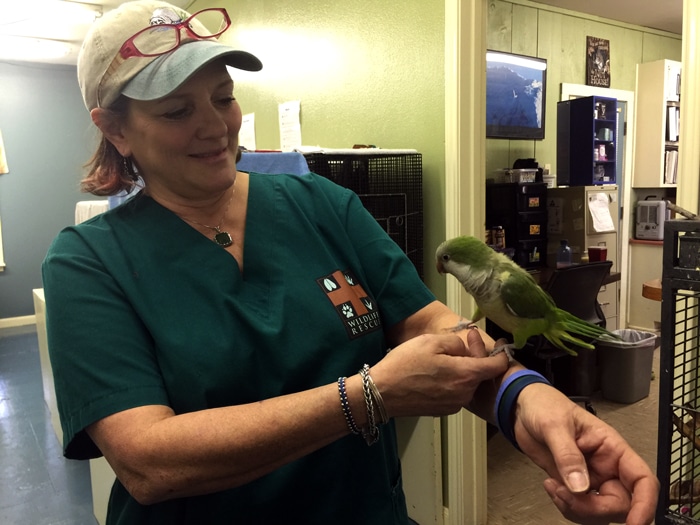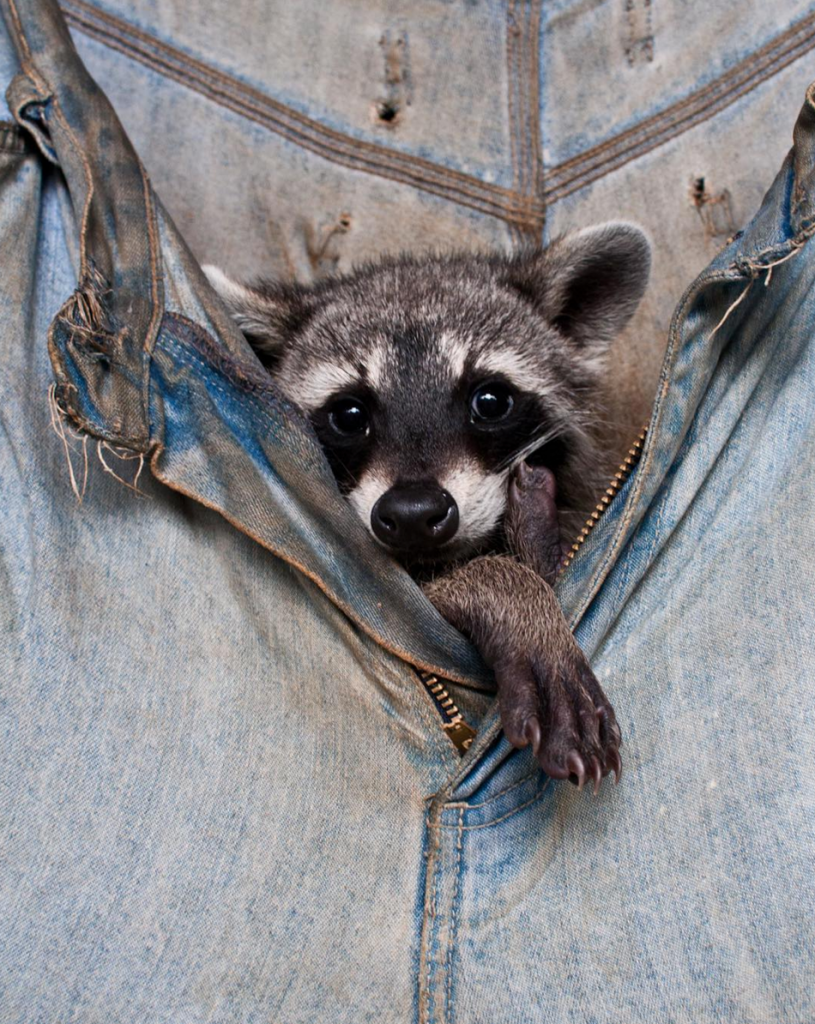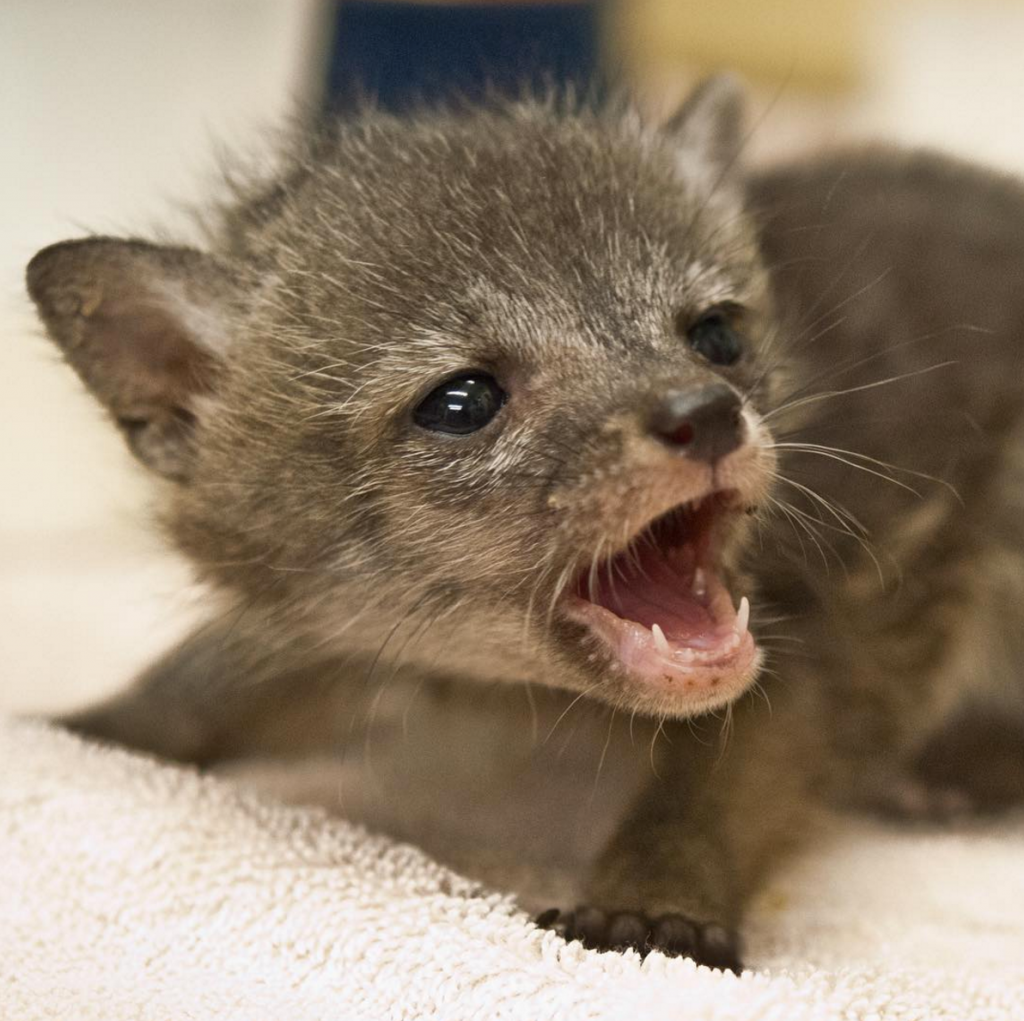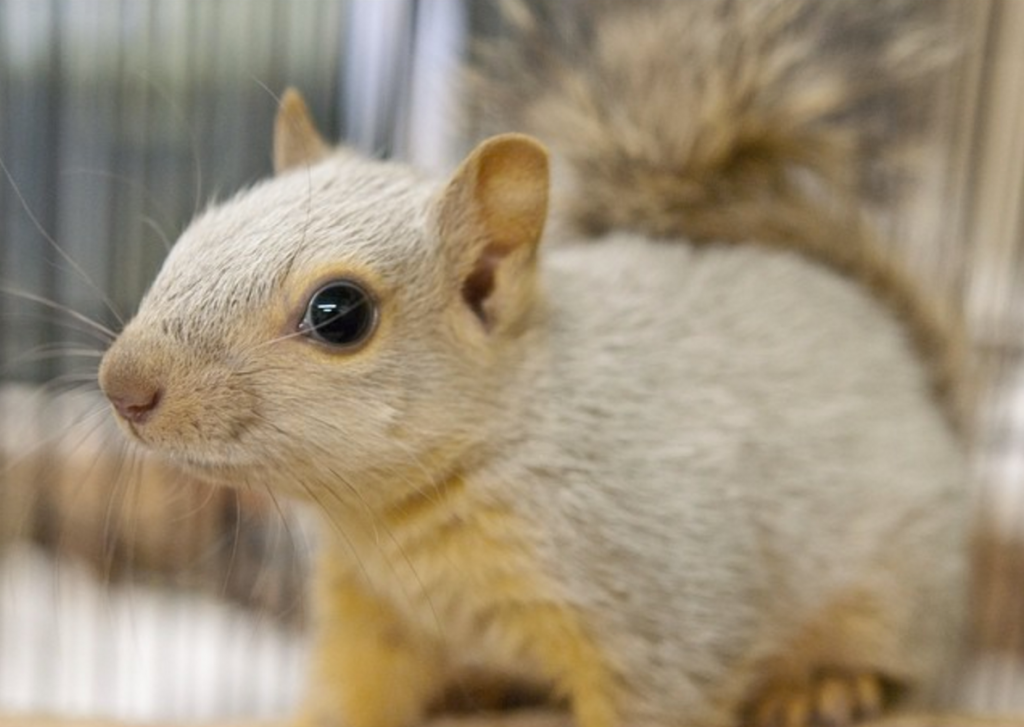
Tito, an African sulcata tortoise, was found wandering around in Dripping Springs
He lives at Austin Wildlife Rescue now
Tucked away in the trees off Martin Luther King Jr. Boulevard in East Austin stands Austin Wildlife Rescue. This organization provides Texas rehabilitation aid and successful release to Texas wildlife. Started by a group of animal lovers in 1977, Austin Wildlife Rescue has grown to serve over 6,000 animals in 2014 alone.
Four staff members, numerous volunteers and a Board of Directors, including veterinarians, keep the animals and organization alive. During the busy season (spring and summer), three to four volunteers work alongside the staff to make sure everything is cared for properly, including providing medical help and maintaining the grounds.

Madeline bonded with Bud, the Monk Parakeet, soon after he hatched
Madeline, my tour guide and educator, was once a full-time nurse. After volunteering at Austin Wildlife Rescue, she became so enamored with the work that she switched her career to an Animal Care Specialist. Staff members belong to the International Wildlife Rehabilitation Association, and each employee and volunteer undergoes special training. These are not cuddly, domesticated animals they’re caring for, so everyone must be mindful.

Young raccoon hanging out in some re-purposed jeans (Credit: AWR Instagram)
Once animals receive initial care at Austin Wildlife Rescue, they are taken to rehabilitation homes. Caregivers there are also trained to care for wild animals, and their houses are properly equipped. Madeline herself is a raccoon rehabber, and currently has four raccoons waiting on her when she gets home.
After rehab, Austin Wildlife Rescue organizes release for the creatures on large pieces of land that property owners volunteer for wildlife use. Each property is approved and must have a water source. Birds of prey and other territorial creatures will often be released where they were found.
Touring Austin Wildlife Rescue
Austin Wildlife Rescue’s intake table rests right outside the old house the organization calls home. For those bringing in sick animals, this pretty outdoor area is all they get to see, to ensure the safety of themselves and the animals inside. I was very fortunate to get a tour of the house from Madeline.

Orphaned gray fox from earlier in the season (Credit: AWR Instagram)
Since I was visiting during winter, there weren’t nearly as many animals as the center serves in spring and summer. Still, there were several animals that had recently been brought in.
Immediately to the right of the entrance is the bird area. Austin Wildlife Rescue often nurtures 100 baby birds at different stages of their lives, all needing food at varying intervals. Those in the incubators need food every 20 minutes. Once the older babies are fed at one hour intervals, it’s usually time to start at the beginning with new rescues. Everything must be carefully thought out for these creatures. The bird area even has a fake chimney for the chimney swifts (slender, gray birds).
Birds of prey are housed in a separate area. Most of them are dealing with injuries relating to cars. I was able to see a barred owl, gray horned owl and screech owl in the early stages of recovery.

Partial loss in pigmentation has given this squirrel a lighter coat (Credit: AWR Instagram)
Of course, there are more than just birds. Opossums, squirrels and bunnies are located nearby. Madeline recalls having 33 bunnies in the facility at one point. Surprisingly, the cottontail bunny is very difficult to care for, since it doesn’t eat well in captivity and can die of fright.
There were three squirrels resting in tiny cloth hammocks near where the bunnies are kept. They will be ready for release soon. Many opossum babies are brought in during spring and summer. Sometimes a baby’s mother is harmed, or they may simply fall off their mother’s back. Two white opossums were raised at Austin Wildlife Rescue this year, an unusual treat.
Raccoons have their own room during peak season. During the recent flooding on Barton Creek, a baby raccoon was brought in that people saw fall from 40 feet above them. The next day, another person brought in two more raccoons found near a cliff. Madeline was able to tell their coats looked similar, so she reunited the siblings. They recognized each other and were healed and released together.
Though Austin Wildlife Rescue has a relatively small space to work with, everything is meticulously placed and clean. Even the laundry room was impressively organized.
Educating the Public About Texas Wildlife

Tiny baby opossum (Credit: AWR Instagram)
Austin Wildlife Rescue is available to take your calls (512-472-9453). Staff members can answer your questions about what to do with any wildlife you see or find that might be in trouble.
Many people do not find dealing with wildlife to be intuitive, and sometimes procedures change with new studies. Immediately trapping a wild animal that lives in one’s attic, deck or yard isn’t usually recommended. Removing a piece of urban wildlife’s balanced ecosystem often results in another animal moving in or the prey population growing. Getting to the root of the issue and urging the animal to relocate is key.
Often, people will relocate an animal and then find its babies. If you can convince an animal to move on their own by introducing annoyances like lights, a radio or using ammonia-soaked rags, they will take their young with them. Raccoons, for example, usually have 2-3 den sites to go to.
Another common mistake is quickly assuming fawns, bunnies or baby birds have been abandoned. Mother deer leave their babies for up to 14 hours at a time. Baby birds will often jump out of the nest when attempting to fly, and it may take them 3 days before finally flying. Their parents will feed them on the ground until it is time. Cottontail bunnies are fed early in the morning and late at night, so they can appear to be abandoned during the day, as well.
Getting Involved

Eastern spotted skunk baby at breakfast time
Austin Wildlife Rescue operates completely on donations. Needless to say, they need monetary and hands-on help from those who are interested in their efforts. They have plans to open a large rehabilitation center in Elgin soon.
Go to their Facebook page or website to contact them about volunteer opportunities, and be sure to follow their Instagram for incredible animal photos.
@MadameKLM wants to know:
Do you have a favorite wild Texas animal?
- Guide to Bat Season in Austin - July 20, 2020
- Reimagining Life With Rachel Ahern of Weird City Taxidermy - March 28, 2017
- SXSW Red Carpet Musings With Todrick Hall, Nick Offerman - March 22, 2017

Leave a Reply
You must be logged in to post a comment.